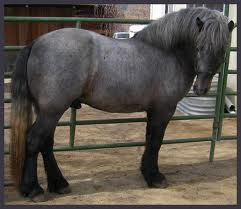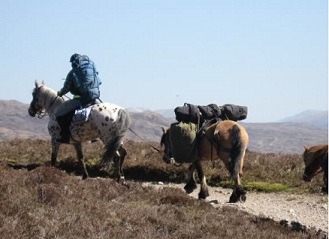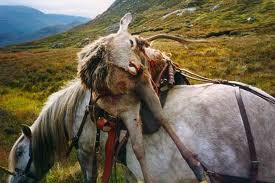|
Highland Pony
Highland Pony: The Scottish highland pony is thought to be of celtic descent. The breed may have originally been crossed with clydesdales to produce strong, docile ponies able to work on the crofts (small tenant farms) of Scotland, working fields, hauling timber and game. 
Highland Ponies are easy to keep, thriving on rough pasture and needing little extra, it has over many centuries adapted to the variable and often severe climatic and environmental conditions of Scotland. Due to their quietness, stamina, and ability to carry weight they make ideal trail riding ponies.
They are still used today to pack out game for hunters. The Highland Pony is the largest of the British Mountain and Moorland ponies. Extraordinarily sound with a very hardy constitution, they are a long lived breed.
In the earliest period of development of the domesticated breed, there were two types: the small and light pony of the Western Isles, and the larger and heavier mainland bred type. The larger animals were commonly called garrons. Both types have integrated now, and thus there is generally less distinction between the types within the pony breed.

Highland ponies are seen in a range of dun shades. They also may be grey, seal brown, black, bay or a shade of liver chestnut, sometimes referred to as "bloodstone", with a flaxen mane and tail. Occasionally, a dorsal stripe is present.
The height of a Highland is between 13 hands to 14.2 hands. The Highland still retains the eel stripe marking, shoulder stripes and zebra stripes on the legs, which typify it as an ancient breed.
|
 Tracing the history of the breed presents difficulties. Some maintain that the Highland is descended from the ancient wild horses that migrated from Asia in the Ice Age.
Tracing the history of the breed presents difficulties. Some maintain that the Highland is descended from the ancient wild horses that migrated from Asia in the Ice Age. 